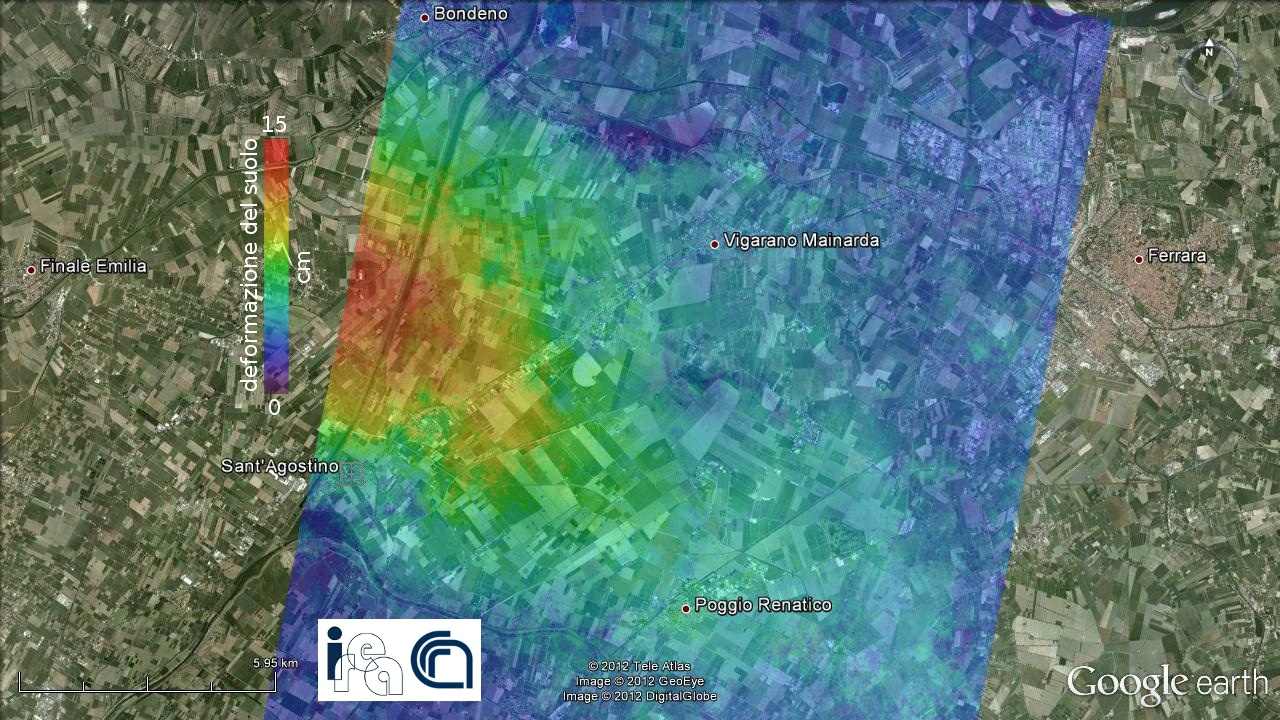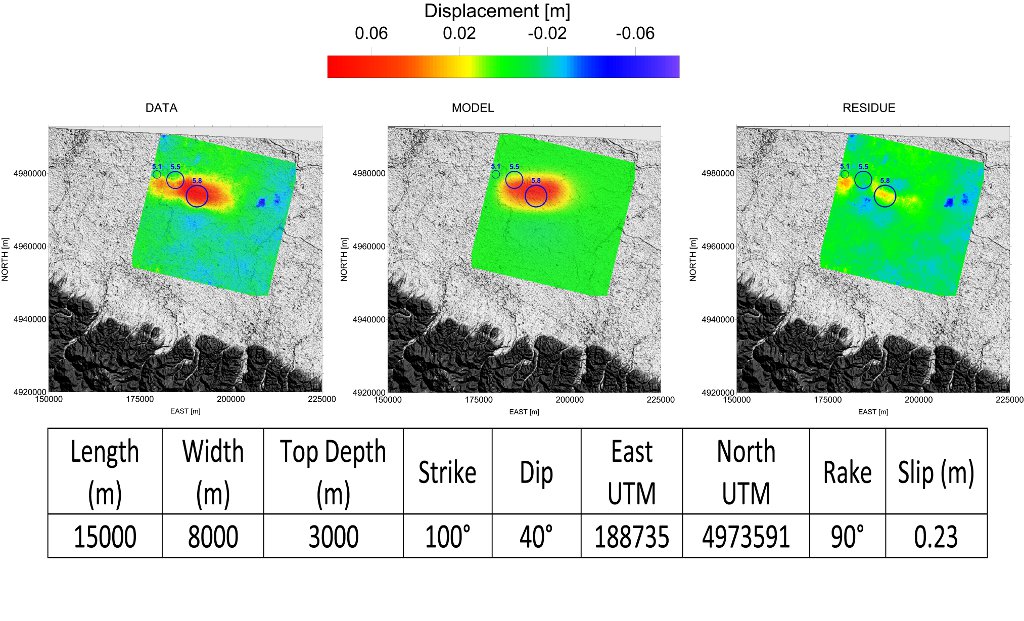
Maria Consiglia Rasulo
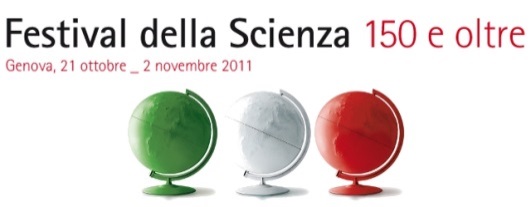 IREA was present at the ninth edition of the Science Festival in Genoa with a conference entitled "The Earth under control. New technologies for environmental monitoring". Eugenio Sansosti and Ilaria Catapano told as earthquakes, landslides, volcanic eruptions or even imperceptible deformations of the Earth's surface can be monitored from space with a sophisticated radar mounted on satellites. And now it is also possible to follow the evolution of deformations using a technique developed at IREA-CNR, with obvious implications for the prevention of risk and decision support in times of crisis.
IREA was present at the ninth edition of the Science Festival in Genoa with a conference entitled "The Earth under control. New technologies for environmental monitoring". Eugenio Sansosti and Ilaria Catapano told as earthquakes, landslides, volcanic eruptions or even imperceptible deformations of the Earth's surface can be monitored from space with a sophisticated radar mounted on satellites. And now it is also possible to follow the evolution of deformations using a technique developed at IREA-CNR, with obvious implications for the prevention of risk and decision support in times of crisis.
The in-situ monitoring is instead made possible by the ground penetrating radar technology. In this context, the methodologies developed at IREA-CNR allow to obtain high-resolution images with which to test the structural integrity of buildings or infrastructures, to identify hidden or buried objects such as weapons and explosives, and to detect remote vital signs essential to locate victims of landslides or avalanches. Sophisticated technologies useful to keep under control the Earth and the complex dynamic system consisting of the earth's crust, in order to live more secure.
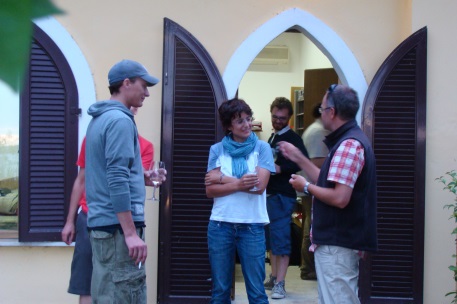
On February 19, 2012 the Experimental Station of the National Research Council "Eugenio Zilioli" in Sirmione celebrates 12 years. Its history relives in the memories of the CNR researchers who alternated in its spaces. In its seat of Punta Staffalo on Lake Garda were carried out many scientific activities, events of outreach and environmental education that have allowed a wide audience to know the scientific contribution of the CNR for the monitoring of waters of the largest lake in Italy.
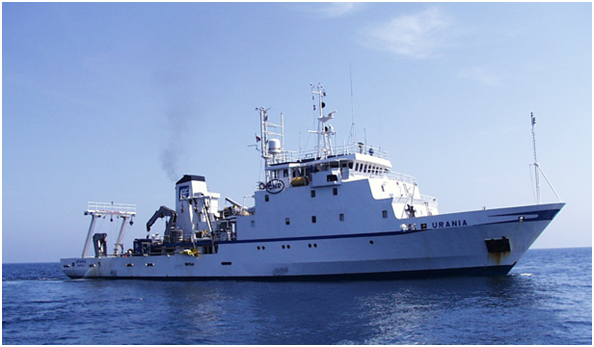 From May 3 to 17, 2012 three research institutes of CNR, IREA, ISMAR and ISSIA will share the CNR research vessel Urania to achieve some measurement campaigns in the Adriatic Sea. This is just one of more than 300 expeditions that Urania has been performing for 20 years of scientific work in the Italian seas and in the Mediterranean, but for the first time there will be the opportunity to follow some aspects of the campaign via the web. For some days researchers will experience a special logbook which will document real-time the expedition stages and the activities carried out during the mission. By connecting to the online platform https://uraniaexpedition.crowdmap.com, it will be possible to read the notes on board, consult the dynamic map, leave comments and send messages.
From May 3 to 17, 2012 three research institutes of CNR, IREA, ISMAR and ISSIA will share the CNR research vessel Urania to achieve some measurement campaigns in the Adriatic Sea. This is just one of more than 300 expeditions that Urania has been performing for 20 years of scientific work in the Italian seas and in the Mediterranean, but for the first time there will be the opportunity to follow some aspects of the campaign via the web. For some days researchers will experience a special logbook which will document real-time the expedition stages and the activities carried out during the mission. By connecting to the online platform https://uraniaexpedition.crowdmap.com, it will be possible to read the notes on board, consult the dynamic map, leave comments and send messages.
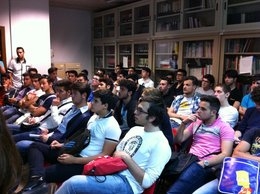
 Thursday, May 10 a group of students from the Industrial Technical Institute "Antonio Pacinotti" of Scafati (SA) conducted a guided tour of the IREA headquarters in Naples, where students were able to see closely the places where research is carried out, look directly at the working tools and meet researchers.
Thursday, May 10 a group of students from the Industrial Technical Institute "Antonio Pacinotti" of Scafati (SA) conducted a guided tour of the IREA headquarters in Naples, where students were able to see closely the places where research is carried out, look directly at the working tools and meet researchers.
Through the visit the boys, mostly students of the 5th year with specialization in Electrical, Electronics and Telecommunications, saw with their own eyes what is done in a research institute. Accepting young students, encouraging and stimulating their curiosity, is an important experience not only for them, also in view of their future choices, but it is also an opportunity to spread scientific culture and to raise awareness in science and research.
In the emergency after the earthquake in Emilia Romagna, from the earliest hours subsequent the seism the Civil Protection Department involved the Italian Space Agency, the National Research Council - Institute for Electromagnetic Sensing of the Environment and the Institute of Geophysics and Volcanology in order to program new radar acquisitions by satellites of the COSMO-SkyMed constellation to have information in a very short time about the crustal deformation associated with the seismic shocks of greater energy: type of deformation, magnitude and extent of the territory concerned.
Thanks to the satellite information it has been possible to complete the picture of the situation of the area affected by the earthquake. For a part of the studied area there is evidence that there has been an uplift whose maximum value is about 15 centimeters. These data agree with the seismological ones and show a main rupture plan dipping to the south along which the southern part of this area of the Po Valley has overlapped on the northern sector (overthrust fault).
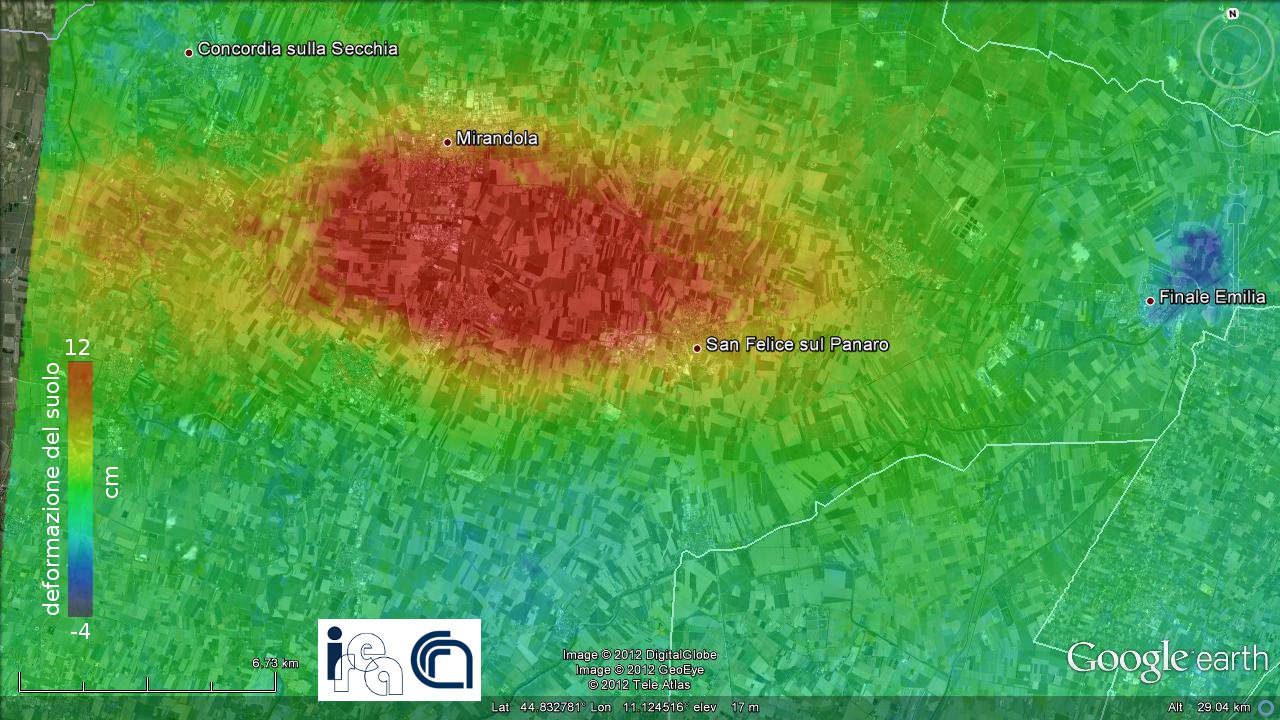 It is continuing the monitoring activity from space of the areas affected by the earthquake in Emilia Romagna, started by the Civil Protection Department after the beginning of the seismic sequence. The new radar acquisitions by satellites of COSMO-SkyMed constellation, that the Italian Space Agency has planned over the area in which seismic phenomena are taking place, allowed to study the permanent effects of ground movements caused by the quake of May 29, 2012. The study has been conducted by a joint team of researchers from the Institute for Electromagnetic Sensing of the Environment of the National Research Council (IREA-CNR) in Naples and the National Institute of Geophysics and Volcanology (INGV) by using a technique called differential interferometry which allows to measure ground displacements even in the order of a few centimeters over large areas.
It is continuing the monitoring activity from space of the areas affected by the earthquake in Emilia Romagna, started by the Civil Protection Department after the beginning of the seismic sequence. The new radar acquisitions by satellites of COSMO-SkyMed constellation, that the Italian Space Agency has planned over the area in which seismic phenomena are taking place, allowed to study the permanent effects of ground movements caused by the quake of May 29, 2012. The study has been conducted by a joint team of researchers from the Institute for Electromagnetic Sensing of the Environment of the National Research Council (IREA-CNR) in Naples and the National Institute of Geophysics and Volcanology (INGV) by using a technique called differential interferometry which allows to measure ground displacements even in the order of a few centimeters over large areas.
Starting from the information supplied by INGV, researchers at IREA have then realized a model of the source responsible for the observed deformations which describes its shape and location.
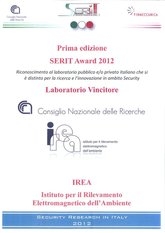 During the second annual day of Serit (Security Research in ITaly), the Italian technological platform on security promoted by CNR and Finmeccanica, the laboratory Radar for security applications and monitoring of the territory of IREA received the Serit Award in the headquarters of CNR in Rome yesterday, June 27.
During the second annual day of Serit (Security Research in ITaly), the Italian technological platform on security promoted by CNR and Finmeccanica, the laboratory Radar for security applications and monitoring of the territory of IREA received the Serit Award in the headquarters of CNR in Rome yesterday, June 27.
The laboratory, whose referents are Gianfranco Fornaro and Francesco Soldovieri, operates in the domains "Technology & crisis management for the protection of people, assets and infrastructures" and "Detection & Identification systems". The award is a recognition for the public and / or private Italian laboratory which stood out for research and innovation in the field of Security with regard to Technological Excellence & Innovation, Management Excellence and Working Environment.
Serit brings together Italian companies and agencies dealing with research in the field "Homeland Security". This means development of skills and technologies designed to detect, prevent, deter and manage the impact of criminal acts, including the terrorist ones, or aimed at mitigating risks from natural, man-made and industrial disasters. Currently more than 250 partners belong to Serit, including the National Research Council, Alenia Aeronautica, Selex Elsag, Enea, the Fiat Research Centre, The Catholic University of “Sacro Cuore”, the Polytechnic University of Turin.
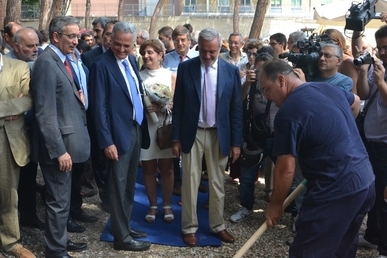 It has been held today, July 2, the ceremony of laying the first stone of the new headquarters of the Technology Hub of the National Research Council of Italy in Naples. The ceremony was opened by the President of CNR, Luigi Nicolais, and the interregional administrator for Public Works of Campania and Molise Giovanni Guglielmi. The complex will house the Institute for Research on Combustion (IRC) and the Institute for Electromagnetic Sensing of the Environment (IREA). The operation is part of a comprehensive plan of development related to global arrangement of CNR structures in Naples.
It has been held today, July 2, the ceremony of laying the first stone of the new headquarters of the Technology Hub of the National Research Council of Italy in Naples. The ceremony was opened by the President of CNR, Luigi Nicolais, and the interregional administrator for Public Works of Campania and Molise Giovanni Guglielmi. The complex will house the Institute for Research on Combustion (IRC) and the Institute for Electromagnetic Sensing of the Environment (IREA). The operation is part of a comprehensive plan of development related to global arrangement of CNR structures in Naples. 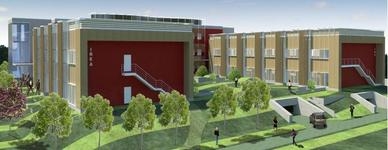 The project, edited and prepared by the Interregional Superintendency for Public Works in Campania – Molise, as Contracting Authority, involves the construction of three buildings arranged around a central courtyard, a typology that allows the maximum integration between green and constructed parts and excellent solutions from both a functional and aesthetic point of view. In addition to the current architectural lines, it has been provided for the application of the latest methods of construction in seismic areas and the use of methodologies for energy saving.
The project, edited and prepared by the Interregional Superintendency for Public Works in Campania – Molise, as Contracting Authority, involves the construction of three buildings arranged around a central courtyard, a typology that allows the maximum integration between green and constructed parts and excellent solutions from both a functional and aesthetic point of view. In addition to the current architectural lines, it has been provided for the application of the latest methods of construction in seismic areas and the use of methodologies for energy saving.
 The latest edition of the CNR "Highlights" has been presented in Rome. The volume contains a selection of the most interesting scientific papers which appeared in international journals and present in the database of Web of Science, chosen by the Editorial Board of the National Research Council of Italy on the basis of ISI indices. Among the 220 chosen from the about 14,000 published in international journals over the period 2010-2011, there is one on the characterization of the adaptive response induced by radio-frequency published by the group of Bioelectromagnetics of IREA (Sannino et al., International Journal of Radiation Biology, 89, 2011). The article represents the continuation of the studies conducted at IREA, in collaboration with the University of Texas San Antonio, which showed for the first time that exposure to radiofrequency electromagnetic fields are able to reduce the damage caused to DNA by genotoxic agents.
The latest edition of the CNR "Highlights" has been presented in Rome. The volume contains a selection of the most interesting scientific papers which appeared in international journals and present in the database of Web of Science, chosen by the Editorial Board of the National Research Council of Italy on the basis of ISI indices. Among the 220 chosen from the about 14,000 published in international journals over the period 2010-2011, there is one on the characterization of the adaptive response induced by radio-frequency published by the group of Bioelectromagnetics of IREA (Sannino et al., International Journal of Radiation Biology, 89, 2011). The article represents the continuation of the studies conducted at IREA, in collaboration with the University of Texas San Antonio, which showed for the first time that exposure to radiofrequency electromagnetic fields are able to reduce the damage caused to DNA by genotoxic agents.
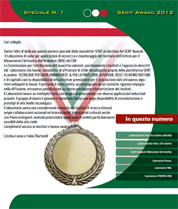 It was devoted to the laboratory Radar for security applications and monitoring of the territory of IREA, winner of the SERIT Award 2012, the special issue of the newsletter of Serit (Security Research ITaly), the national technological platform on security which includes Italian companies and institutions engaged in research in the field "Homeland Security". "The Commission for the award allocation", we read in the introduction of Cristina Leone and Fabio Martinelli, "has positively assessed the results and the approach described by the laboratory that allowed to face the technological challenges typical of the platform SERIT in the framework of technologies for crisis management and for protection of people, assets and infrastructures".
It was devoted to the laboratory Radar for security applications and monitoring of the territory of IREA, winner of the SERIT Award 2012, the special issue of the newsletter of Serit (Security Research ITaly), the national technological platform on security which includes Italian companies and institutions engaged in research in the field "Homeland Security". "The Commission for the award allocation", we read in the introduction of Cristina Leone and Fabio Martinelli, "has positively assessed the results and the approach described by the laboratory that allowed to face the technological challenges typical of the platform SERIT in the framework of technologies for crisis management and for protection of people, assets and infrastructures".


